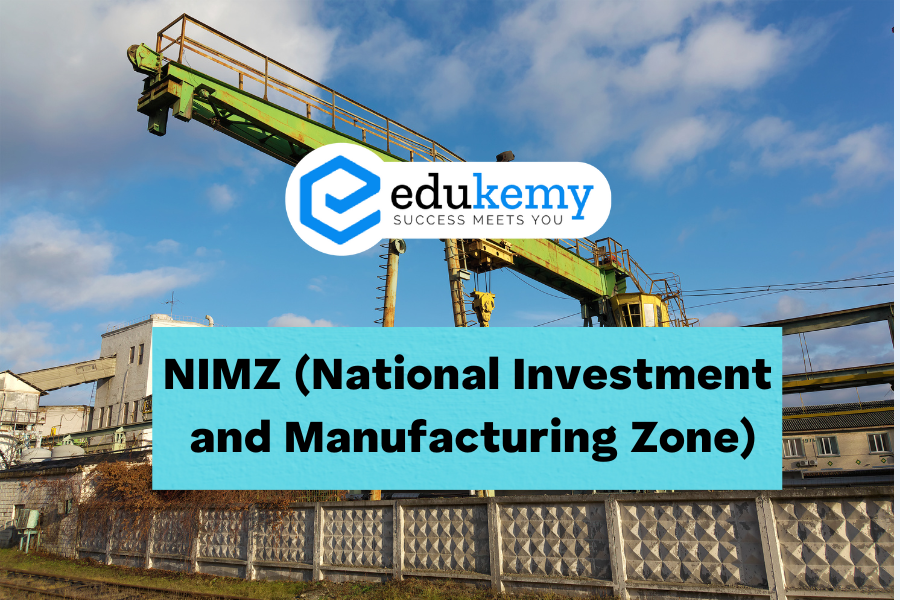
A National Investment and Manufacturing Zone (NIMZ) represents a pivotal initiative in a nation’s economic strategy, designed to foster industrial growth, attract investment, and propel manufacturing capabilities. These zones serve as specialized areas strategically designated by governments to concentrate infrastructure, resources, and policies conducive to industrial development. NIMZs aim to create robust ecosystems that streamline manufacturing processes, encourage innovation, and enhance competitiveness on both domestic and global fronts. Typically characterized by state-of-the-art infrastructure, supportive regulatory frameworks, and facilitative measures for businesses, NIMZs emerge as hubs of industrial excellence, driving economic expansion, job creation, and technology advancement. By leveraging synergies between various stakeholders, including government agencies, private enterprises, research institutions, and local communities, NIMZs emerge as catalysts for sustainable economic growth, fostering a conducive environment for industrial transformation and prosperity.
Contents
NIMZ (National Investment and Manufacturing Zone):
- Size and Scope: NIMZs are characterized by their extensive size, encompassing various facilities such as production units, public utilities, logistics, environmental protection mechanisms, residential areas, and administrative services.
- Inclusive Structure: NIMZs are comprehensive structures that may include one or more Special Economic Zones (SEZs), industrial parks, and warehousing zones. They are not exclusively focused on exports.
- Size Requirement: An NIMZ is expected to have a minimum area of at least 5000 hectares.
- Infrastructure Responsibility: The internal infrastructure of an NIMZ is provided by a developer or a group of co-developers, while external linkages are facilitated by the Government of India and the respective state government. Coordination between the central and state governments is crucial.
- State Government’s Role: State governments play a significant role in tasks such as land selection and acquisition, ensuring water and power connectivity, infrastructure linkages, and addressing health, safety, and environmental issues.
- Reservation for MSMEs: States may reserve a portion of the land within NIMZs for Micro, Small, and Medium Enterprises (MSMEs).
- Ownership Models: Ownership of an NIMZ can be with the state government, a state government undertaking in joint ownership with a private partner, or another appropriate model.
SEZ (Special Economic Zone):
- Export Focus: SEZs are primarily concentrated on exports, providing a favorable environment for export-oriented activities.
- Services Sectors: SEZs can cater to the services sector as well, unlike NIMZs.
- Size Variability: SEZs can vary in size, and their primary goal is to promote exports and economic activities with a special focus on creating a business-friendly environment.
- Regulatory Framework: SEZs operate under a specific regulatory framework to encourage investments and exports.
- Infrastructure and Facilities: SEZs offer infrastructure and facilities to enhance the ease of doing business for entities operating within their boundaries.
In summary, while both NIMZs and SEZs contribute to industrial and manufacturing development, NIMZs are larger and more inclusive structures, incorporating various facilities beyond just export-oriented activities. They aim to boost manufacturing, investment, and overall economic development.
FAQs
1. What is a NIMZ?
- NIMZ stands for National Investment and Manufacturing Zone. It is a designated area aimed at promoting industrialization and attracting investments in manufacturing sectors. These zones offer a conducive environment for setting up industries with infrastructure support and various incentives.
2. What are the objectives of establishing NIMZ?
- The primary objectives of establishing NIMZ are to boost manufacturing activities, create employment opportunities, attract domestic and foreign investments, facilitate infrastructure development, promote sustainable industrial growth, and enhance exports.
3. How are NIMZ different from Special Economic Zones (SEZs)?
- While both NIMZ and SEZs aim to promote industrialization, there are key differences. NIMZ cover a larger area and focus on integrated development with robust infrastructure, including power, water, and transportation. They also provide a broader range of incentives and support services compared to SEZs.
4. What incentives are available for industries in NIMZ?
- Industries located within NIMZ typically benefit from incentives such as tax holidays, duty exemptions on imports for manufacturing purposes, streamlined approval processes, access to financing facilities, subsidized land and utilities, and relaxation of labor regulations, among others.
5. How does the establishment of NIMZ contribute to economic growth?
- NIMZ play a crucial role in driving economic growth by attracting investments, fostering innovation, creating employment opportunities, enhancing productivity, boosting exports, and stimulating overall industrial development. They serve as catalysts for regional development and contribute significantly to the GDP of the country.
In case you still have your doubts, contact us on 9811333901.
For UPSC Prelims Resources, Click here
For Daily Updates and Study Material:
Join our Telegram Channel – Edukemy for IAS
- 1. Learn through Videos – here
- 2. Be Exam Ready by Practicing Daily MCQs – here
- 3. Daily Newsletter – Get all your Current Affairs Covered – here
- 4. Mains Answer Writing Practice – here

